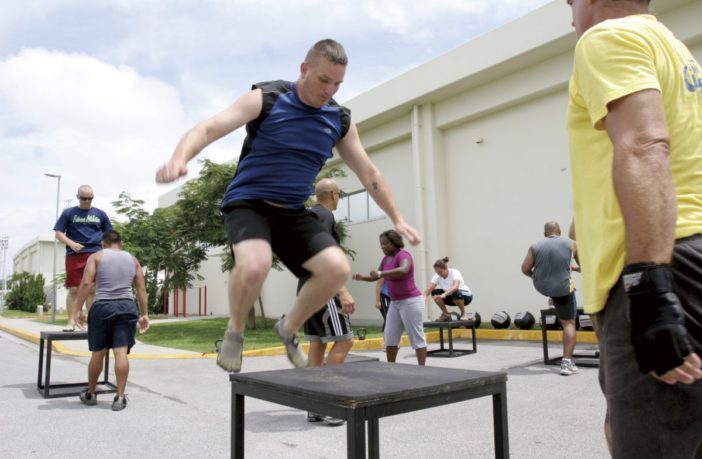

This method requires the athlete to perform two jumps in quick succession. Quick & Stick (Q&S) – The athlete has now learned to jump, so we can begin adding reps.Counter Movement (CM) – Starting to add speed and utilizing the SSC, the athlete starts in a tall position and rapidly loads and explodes, giving you that lengthening and shortening of the muscle.
#PLYOMETRIC RAPID JUMP HOW TO#
Using this method, we can begin to teach the body where they should be jumping from and how to apply force to the ground. Non-Counter Movement (NCM) – This position sets the athlete up in the bottom or stretched portion of the jump.Now how do we teach and progress these jumps? Progressions In this scenario, the athlete will jump from one leg to the other in a left-right fashion while trying to cover as much distance as possible. Another example would be a lateral bound. To start putting things together, we could perform a vertical jump leading the individual to jump as high as they can on both legs. *Pogos & Skips – Both can be unilateral or bilateral movements and are versions of jumps these will contain more of the lower impulse jumps and will be covered more in upcoming topics.

Hops – Similar to jumps except for jumping and landing on one legīound – Jumping from one foot to the other with emphasis on a horizontal projectionīroad Jump – Taking off and landing on two feet with emphasis on distance Jumps – Taking off and landing on two feet with a vertical height emphasis Lastly, the transverse plane involves a rotation, thus changing the position the body is facing (unless it’s a 360 jump). Next is the frontal plane, where we look to displace the body sideways or a left and right manner. Fundamentally, it is a jump that occurs forwards, backward, or straight up and down.

The sagittal plane will be the one we think of the most.

Power development and skill acquisition are plane specific, making it imperative to train them all in a long-term development program. The higher or more aggressive you jump, thus the more impact or impulse upon landing. The impulse will be low because the muscles receive the impact in a wave-like manner. A low impulse would be a lower intensity jump. Jumps can be categorized as either Low or High Impulse. With jumping, we will break down four separate considerations that all interlay within each other. Each of these requires the individual to stretch a particular muscle group and contract to generate speed and velocity in one swift manner. Other movements that fall into this category would be Sprinting, Shuffling, and MB Throws. We will just touch on these a bit but the main purpose of this article will be revolved around the modalities and progressions of jumping.Īs stated earlier, any quick stretch immediately into a contraction is a plyometric activity. While jumping is the primary method of training elasticity, or a muscle’s ability to contract and relax quickly, there are others as well. The SSC is defined as the time when a muscle is both lengthened and contracted in a rapid or immediate nature. Jumping is indeed a form of a plyometric activity however, any movements that utilize the Stretch-Shortening Cycle (SSC) are considered plyometric. When we hear the term plyometrics, we often associate it with jumping.


 0 kommentar(er)
0 kommentar(er)
